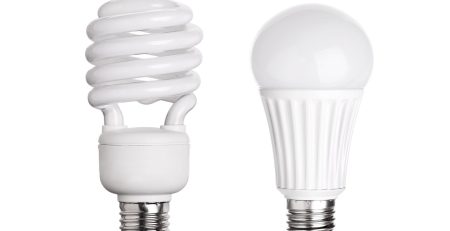Definition of static electricity
Definition of static electricity – causes and effects on our daily lives

Contents
Do you know the meaning of static electricity ? Who among us was not surprised when we felt an electric shock while touching a parked car or shaking hands with someone one day? It is also certain that everyone rubbed a ruler with a cloth and was able to hold a piece of paper with it just by touching it, thinking that he had turned the ruler into a magnet for papers. In fact, this is not a coincidence or an unexplainable phenomenon: it is static electricity that is subject to a scientific law that allows it to be interpreted, explained and measured, which is Coulomb’s law. To demystify the topic and gain more information about static electrical energy.
What is electricity?
Before discussing static electricity, we must first learn about electricity, as it is energy produced as a result of the transfer of electrons from a medium with a high electrical potential to a medium with a low potential. This movement is known as electric current, which is characterized by its intensity and voltage. As a reminder, the current intensity is the amount of electrons that cross a section in an electrical conductor and its unit is the ampere, while the voltage is the difference between the highest and lowest potential of the current source and its unit is the volt.
There is another type of electricity called static electricity, and it has different properties and advantages that we will discuss together in the rest of the article.
Definition of static electricity and why it was given this name
Static electricity is a physical phenomenon represented by the accumulation of electrical charges on matter through the transfer of electrons from one body to another, such as woolen clothing, especially through contact or friction. The body that gained the charged electrons becomes negatively charged, while the body that lost them becomes positively charged.
It is called static electricity, and also called static electricity, because the word ordinary electricity that we know is related to the movement of electrons. As for static electricity, it is the accumulation of electrons without movement, that is, they are in a state of rest, and they form a charge that can produce an electric current if the appropriate conditions are available to modify the body’s charge by getting rid of it or gaining it. Electrons depending on the situation, as the effect and movement of the latter is through a conductor that generates an electric current.
The difference between static and moving electricity
There are several differences between static electricity and moving electricity, which can be summarized as follows:
- Source : Static electricity is generated as a result of the friction of one of the objects between each other or the contact between two materials according to Coulomb’s law, while moving electricity is generated by electromagnetic induction.
- Movement : Moving electricity can move and move within conductors and electrical circuits, while static electricity collects in the body without movement in the form of a static electrical charge, and if it is rubbed or touched forcefully, it turns into moving electricity.
- Presence : Static electricity can exist on conductive materials and insulators, while moving electricity can only exist on conductive materials, meaning that they are materials that conduct electricity.
Types of static electricity
The types of static electricity can be classified according to two criteria, the first is the type of charge while the second criterion is the conductivity of the material on which it is located.
According to shipment:
Static electricity can be classified according to its type of charge, which can be positive or negative.
Static electricity has a negative charge
This type is formed when a moderately charged substance gains a group of electrons as a result of friction or contact, which leads to the formation of a negative charge equal to the total charge of the acquired electrons.
Static electricity has a positive charge
This type of static electricity is formed in the material that has lost electrons, which are transferred to the negatively charged material upon friction, as the exit of negatively charged electrons from the moderately charged material leads to it gaining a positive charge.
Types of static electricity: conductivity of the substance on which it is present
We can also classify static electricity according to the conductivity of the materials present on it, due to the difference in the way it is discharged.
Static electricity on conductors
Static electricity can form on conductors provided that they are insulated, and this type is discharged once the conductor is connected to the ground. Thus, these static charges are transformed into moving electricity and transmitted directly to the ground.
Static electricity on insulators
This static electricity is formed on insulators, and unlike it is formed on conductors, it cannot be eliminated by connecting to the ground. In this case, active ionization must be used by using an ionization device that allows the production of negative and positive charges that allow the substance to be modified and returned to its natural state.
When does static electricity occur?
Static electricity occurs more commonly during the cold winter, when people wear wool clothing. For example, friction between carpets, clothes, and skin can cause electrons to transfer from one person to another, resulting in an attractive force between them. Static electricity can also be caused by changes in weather conditions such as high humidity or dry air.
In addition, static electricity can be generated by rubbing two different materials together, such as glass and plastic, or by separating two objects with different electrical charges. Understanding how static electricity works can help us avoid unpleasant surprises and side effects in your body, as well as utilize it for different purposes.
Examples of static electricity in our daily life
One of the most common examples of static electricity is when you rub a plastic ruler with a cloth and then bring it close to a small piece of paper, which sticks to the ruler. This simple experiment is considered a direct physical application of Coulomb’s law, which states that every two objects of two different charges are subject to a force of attraction, and if they are of two different charges, they are subject to a force of repulsion. When the ruler is rubbed with the cloth, it acquires a charge (positive or negative depending on the type of ruler and the type of cloth), and when it is brought close to a piece of paper with a moderate charge, it produces an attractive force that leads to the paper sticking to the ruler. But in fact, there are many other examples, including:
Lightning

Lightning is considered an effect of the products of static electricity, as the accumulation of electrical charges in large quantities on the clouds leads to the creation of a strong attractive force that ends with the discharge of these charges from a medium with high potential to a medium with low potential, and for this reason we can sometimes see the light of lightning in the sky only and this It occurs when charges are discharged from a high potential cloud to a lower potential cloud. However, if it appears from the sky to the ground, the discharge occurs from the clouds to the ground via the shortest path. We always find lightning striking the highest carrier in the region, and humidity can contribute to determining the path of lightning.
Your hair gets tangled when you skate
When children slide on the slides of amusement facilities, it can be observed that the hair on their head is electrically tangled, and this happens as a result of the body gaining a charge during friction, and thus the hair on the head is charged with the same charge, which leads to repulsion as stipulated by Coulomb’s law known (with the symbol C), and thus the hair repels each other . Which leads to its deformation.
Feeling an electric shock when touching the car body
Sometimes, we feel an electric shock when we touch the outside of the car, and this is the best example of static electricity accumulated on the conductors. When the car is driving, it gains an amount of static electricity as a result of friction with the air, and this charge remains on the surface of the car because dry rubber wheels usually do not transmit electrical current. When touching the car, the human body acts as a conductor connected to the ground, and the charges are discharged and the static electricity is transformed into electricity. Moving, we feel the shock as a result of the generated electrical current crossing the body.
Dust accumulation on TV screens
We often notice that dust accumulates faster and larger on screens. This is due to the charges they contain generate an attractive force that affects dust particles and particles with opposite or no charge. Due to their light weight, these particles are attracted to the screen and stick to it.
What is the difference between static electricity and current electricity?
Static electricity and current electricity are two different phenomena studied in physics. They both involve the movement of electrons, but they differ in how they are measured and stabilized.
Static electricity results from an imbalance of electrons on a surface, which can cause shocks when touched. It is a phenomenon that does not involve any movement of electrons and often only exists for a short period of time.
Current electricity, on the other hand, is defined as the continuous flow of electrons through a conductor such as a wire or a circuit board. It is used to power electronic devices and can be measured using an electric meter.
Do we say static electricity or static electricity?
Static electricity, static or static, are all terms that have the same meaning. Static electricity, in English, is static electricity . It is one of the branches of physics that deals with the study of stationary electrical charges ( i.e., at rest ). It is one of the most common phenomena known in daily life and is responsible for Some common events include shocks when touching metal objects, lightning, and attraction between small light objects.
Abstract : In this article, we presented the definition of static electricity , and how it differs from dynamic or moving electricity. How static electricity is generated by transferring electrons from one body to another, and how it can accumulate on conductive or insulating materials. The article also discusses the two types of static electricity – positive and negative – and how it is discharged, depending on the conductivity of the material it is on. We hope you have benefited, dear reader.

















Leave a Reply
You must be logged in to post a comment.